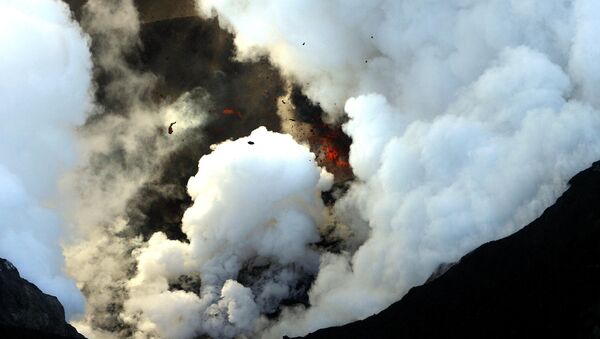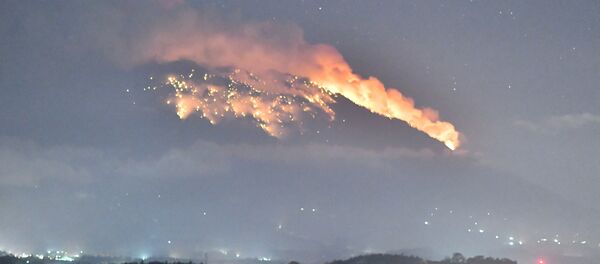Scientists have found that Katla, a “highly hazardous” gigantic volcano in Iceland, is showing signs that it could erupt one day. Joint research by Icelandic and British geologists and volcanologists, published in the journal Geophysical Research Letters, has it that Katla’s cone, hidden deep beneath a huge glacier on a 5,000 foot peak, is rapidly filling with magma, which is apparent due to vast releases, between 12 and 24 kilotons, of carbon dioxide in the area. The latter is universally seen as a dangerous precursor to an eruption.
However, despite numerous media, including The Sunday Times, publishing discouraging forecasts allegedly offered by the research team, Evgenia Ilyinskaya, a research fellow at the Institute of Geophysics and Tectonics at Leeds University, took to Facebook to bust most of the claims, accusing the media for misquoting her:
“It is well known from other volcanoes, for example in Hawaii and Alaska, that CO2 emissions increase weeks or years ahead of eruptions,” noted Evgenia Ilyinskaya, as quoted by The Sunday Times.
“This is a clear sign we need to keep a close eye on Katla. She isn’t just doing nothing, and these findings confirm that there is something going on.” Even more so, Ilyinskaya argued, since Katla last erupted in 1918, having previously done so every 50 years on average — a fact that makes the research group believe that a new eruption is long overdue.
READ MORE: Helicopter Pilot Films Lake of Fire in Active Volcano
The question is still open as to when exactly Katla, which is the Icelandic for “kettle” or “boiler,” will erupt, but “it will,” according to Sarah Barsotti, co-ordinator for volcanic hazards at the Icelandic Meteorological Office.
Back in 2010, another volcano, the notorious Eyjafjallajokull made headlines as its phenomenal ash plume left thousands of passengers stranded across Europe, with international air traffic being virtually brought to a halt.
Whatever the case, there are those who choose not to leap to conclusions, citing the need for more in-depth research. For instance, Magnus Tumi Gudmundsson, a professor of geophysics at the University of Iceland, argued Katla could act as an exhaust vent for gases released en masse deep in the volcanic belt, which is largely a normal scenario and is not directly linked to any unusual activity in the cone.





